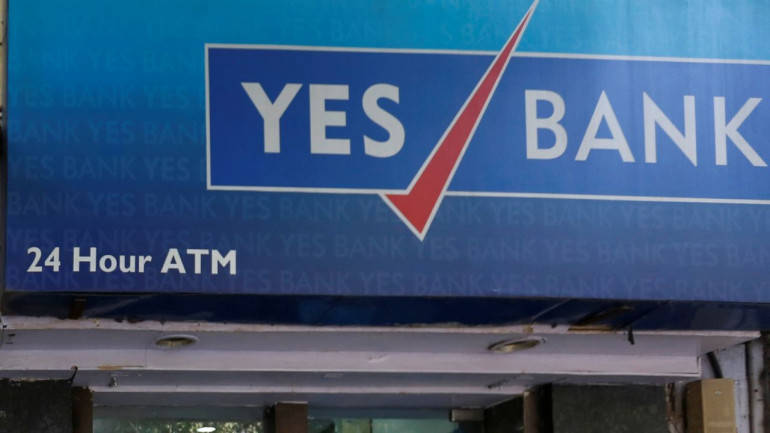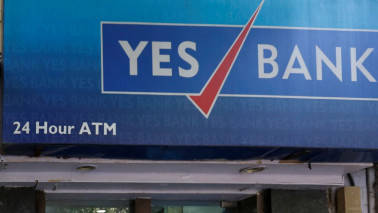Yes Bank - Is it a yes or a no after the recent correction?
The bank is well-capitalised with a very healthy capital adequacy ratio, steadily capturing market share in advances. It has been building a solid low-cost liability franchise. Investors cannot ignore these fundamental strengths.

Madhuchanda Dey
Moneycontrol Research
The repeated divergence from RBI’s asset quality classification shakes investor confidence and hence the correction in Yes Bank doesn’t come as a surprise. Is this correction an opportunity for investors or is it still a 'no' for the bank?
Good operating performance nevertheless
The reported numbers were strong with profit-after-tax growing by 25 percent and pre-provision profit by 38 percent. Growth in net interest income (difference between interest income and interest expenses) at 33.5 percent came on the back of stable net interest margin at 3.7 percent and robust growth in advances at 35 percent. The non-interest income growth too was at a healthy 35 percent on the back of 44 percent surge in fees. The cost-to-income ratio moderated, despite robust business growth. The steep surge in provision on the back of divergence observed by the RBI inspection took away much of the sheen.
Business showing traction
The bank has been aggressive in capturing market share. Advances showed a robust growth of 35 percent and Yes Bank now has close to 7.5 percent share in incremental advances.
The bank has been able to compete in the market, thanks to the low-cost liability profile it has been gradually building. While overall deposits grew by 23.4 percent, the low-cost CASA (current & savings account) deposits grew by 51 percent and constitute 37.2 percent of total deposits. The bank has close to 3.4 percent share in the incremental deposits of the system.
Thanks to the strength of the low-cost liability, Yes Bank has been able to maintain its margins despite the competitive headwinds leading to a reduction in yield on advances.
Asset quality – the Achilles Heel
The quarter’s otherwise solid performance was clearly marred by the divergence in the NPA level as pointed out by the RBI post its inspection. The bank has been recently levied a penalty as well.

While this is not the first time that such divergence has been observed, the quantum was large. The management tried to alleviate concerns by highlighting that a lion’s share of previous divergence has been recovered by the bank. We, nevertheless, find it difficult to fathom how a lender and regulator can have such differences in perception on asset quality.
Of the total quantum of assets that have been pointed out as divergent by RBI so far –aggregating to Rs 13,351 crore, only 16 percent remains as NPA as the bank has successfully resolved the other cases.
Riding on the strength of its superior loan structuring skills, the bank has only taken a small quantum (Rs 1219 crore) of the latest round of divergence of Rs 6355 crore into gross NPA in this quarter and claims that the issue has been addressed.
Thus, gross NPA has risen by 0.82 percent on account of the divergence. It has created Rs 443 crore provision on this slippage, thereby adding 0.52 percent to net NPA that has touched 1.04 percent. The overall provision cover has fallen to 43 percent.
Investors got to keep in mind that 47 percent of the divergence has been construed as standard assets by the bank and remains a key monitorable, going forward.
However, we got to highlight that the slippage outside the RBI inspection list is also high at Rs 769 crore in the quarter compared to Rs 201 crore in the previous quarter.
The bank has already incurred 48 basis points credit cost but has maintained the full-year credit cost guidance at 70 basis points thereby guiding to much lower provision in the second half.
Yes Bank has also upped the quantum of exposure that are likely to be part of the second round of resolution under the IBC (Insolvency and Bankruptcy Code). The total exposure is close to Rs 1434 crore of which Rs 1267 crore is already a part of the NPA. The bank carries 50 percent provision for the accounts that have already been referred and 39 percent provision for the accounts that are likely to be referred to NCLT (National Company Law Tribunal).
The overall stressed exposure now stands at 2.54 percent of advances (includes net NPA, restructured, SR etc.) up from 1.63 percent in the previous quarter.
Should you say ‘yes’ to the stock now?
For an entity like Yes Bank with close to 68 percent of assets coming from corporates that tend to be lumpier, the lingering fear of a mishap would prevent it from getting the valuation of the premium league. The repeated large quantum of discrepancy with RBI’s observation raises many more questions. Although the bank claims that 75 percent of its corporate portfolio is rated A and above, it will be hard to convince investors till it gets a clean chit from the regulator in the next round of inspection for FY18 (which is at least a good 9 months from now).
However, the bank is well-capitalised (has recently raised capital) with a very healthy capital adequacy ratio of 17.8 percent, steadily capturing market share in advances. It has been building a solid low-cost liability franchise. Investors cannot ignore these fundamental strengths and we feel that a more balanced mix on the asset side should augur well in the future.
With the systemic NPL resolution moving into high gear, we are staring at an end of the bad asset cycle. The recapitalisation of PSU banks and resolution of bad assets should pave the way for recovery of the capex cycle that stands to benefit most corporate lenders including Yes Bank.
Hence, the weakness in the stock cannot be ignored. The stock has fallen by close to 20 percent from its 52-week high and trades at 2.4X FY19 adjusted book. Albeit the discomfort with the recognition of bad assets, we see merit in gradually accumulating the stock in this weak phase.
For more research articles, visit our Moneycontrol Research Page.




















